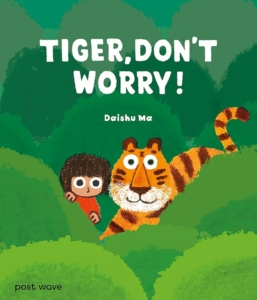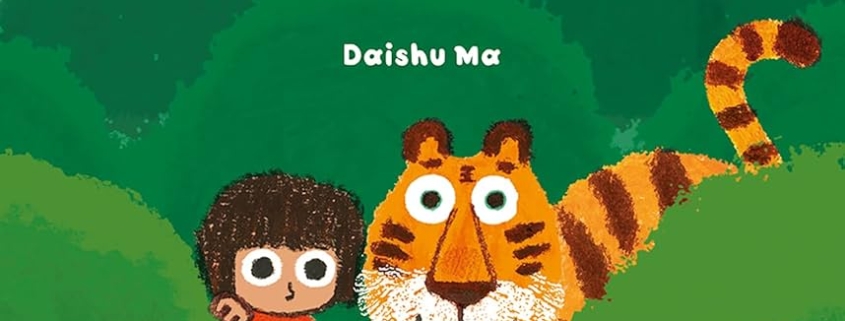Tiger, Don’t Worry by Daishu Ma
We were lucky enough to send some questions to creator of Tiger, Don’t Worry, Daishu Ma. The book and answers are just lovely.

The relationship between Tiger and Mei is beautiful – what do you hope readers will take from reading their adventures?
The beauty of a friendship is that your friend doesn’t have to be just like you. Tiger and Mei are very different, but they care about each other and learn from one another. I hope readers see how differences can bring friends closer, and that adventures—big or small—are more fun and meaningful when shared. I also hope children feel seen in both characters, whether they feel like being wild, or holding back, or somewhere in between.
The illustrations are unique – how were they created and did they take a long time?
I make the illustrations using oil pastels and coloured pencils. I like oil pastels because they are very chunky, super soft, and the colours are so vibrant. They are also a little messy, so the lines can’t always be very precise or perfect – which suits Tiger and Mei very well! I spend a lot of time sketching them in different poses and moods before starting on the final art. It usually takes me a few goes to get it right, but that’s part of the fun. I like when the pictures feel lively and full of movement, even if they’re not perfect.
Do you have more ideas for other Tiger and Mei books?
Definitely! They’re such a lovely pair, and I can imagine them going on lots of fun and unexpected adventures together. I’d love to see them growing up through the seasons in this beautiful place. I think one day they’ll leave the village, hop on the train, and go on a road trip. I’m excited to find out where they’ll go next!
Tiger is a bit impulsive and just wants to have fun, while Mei is more cautious. Was this a conscious choice to have them balance each other?
I wanted to create two characters that are quite different, and have the fun and drama come out of their interactions. Tiger is impulsive and curious, Mei is patient and thoughtful, together they create an interesting dynamic, and even the most mundane situation can turn into something unexpectedly fun and interesting.
In a way I think we all have a bit of Tiger and a bit of Mei inside us, and we often have all these conflicting ideas, with one voice telling us to go one way, and the other voice pulling us another way. But instead of avoiding these clashes, if we face them and really listen to these different voices, we’ll find they can help us understand ourselves better—and lead us somewhere surprising, just like Tiger and Mei.
Where is the story set?
The story is set in a small village in southern China, based on a real place I visited a few years ago. There’s an old house perched on a little hill, surrounded by tea groves. A stream runs through the village, and in the distance, there’s a huge railway bridge with tall arches. When a train passes, it lets out a loud whistle that echoes through the mountains—it made me think about journeys and new adventures. That’s the feeling I wanted to capture in the stories.



